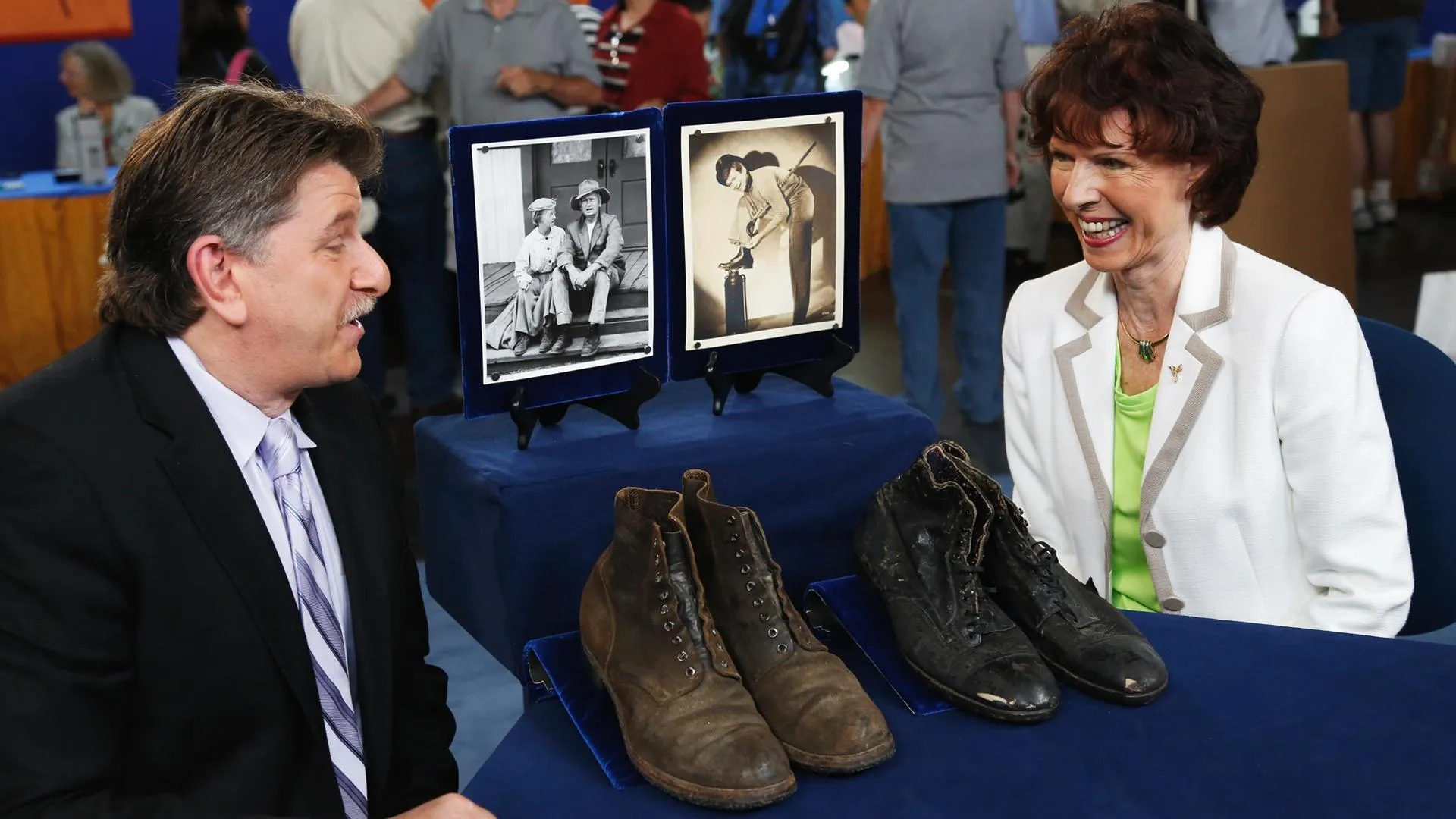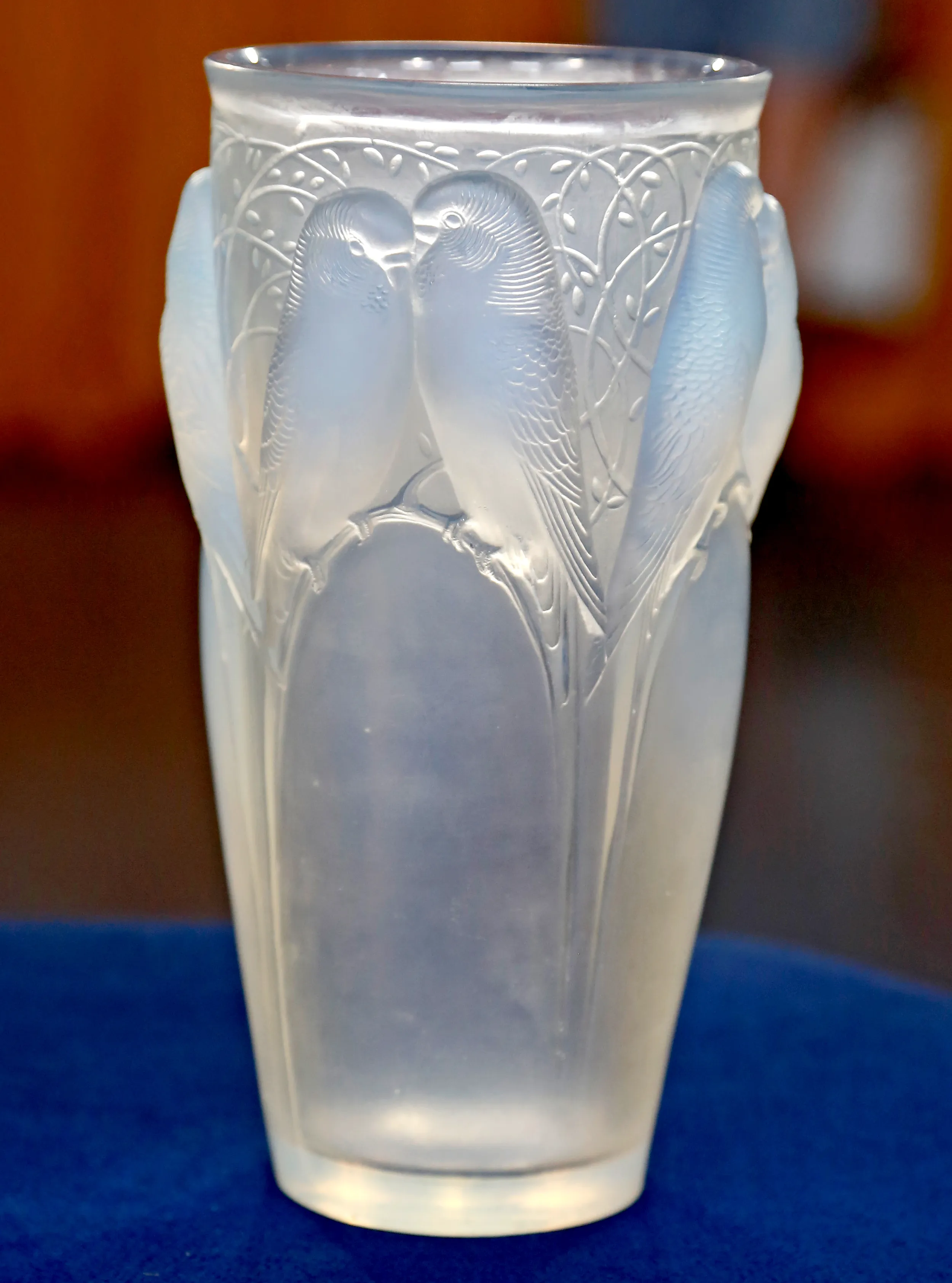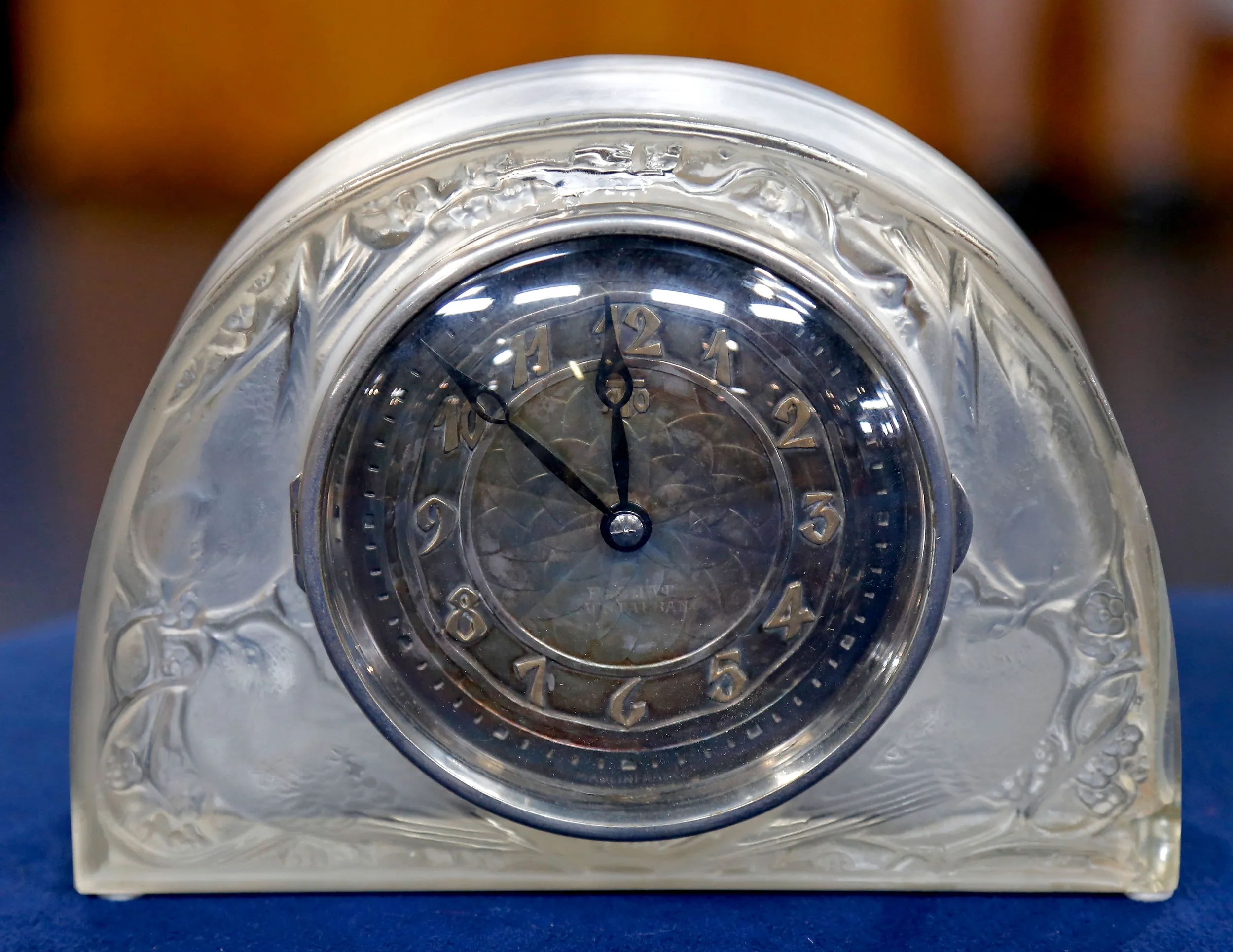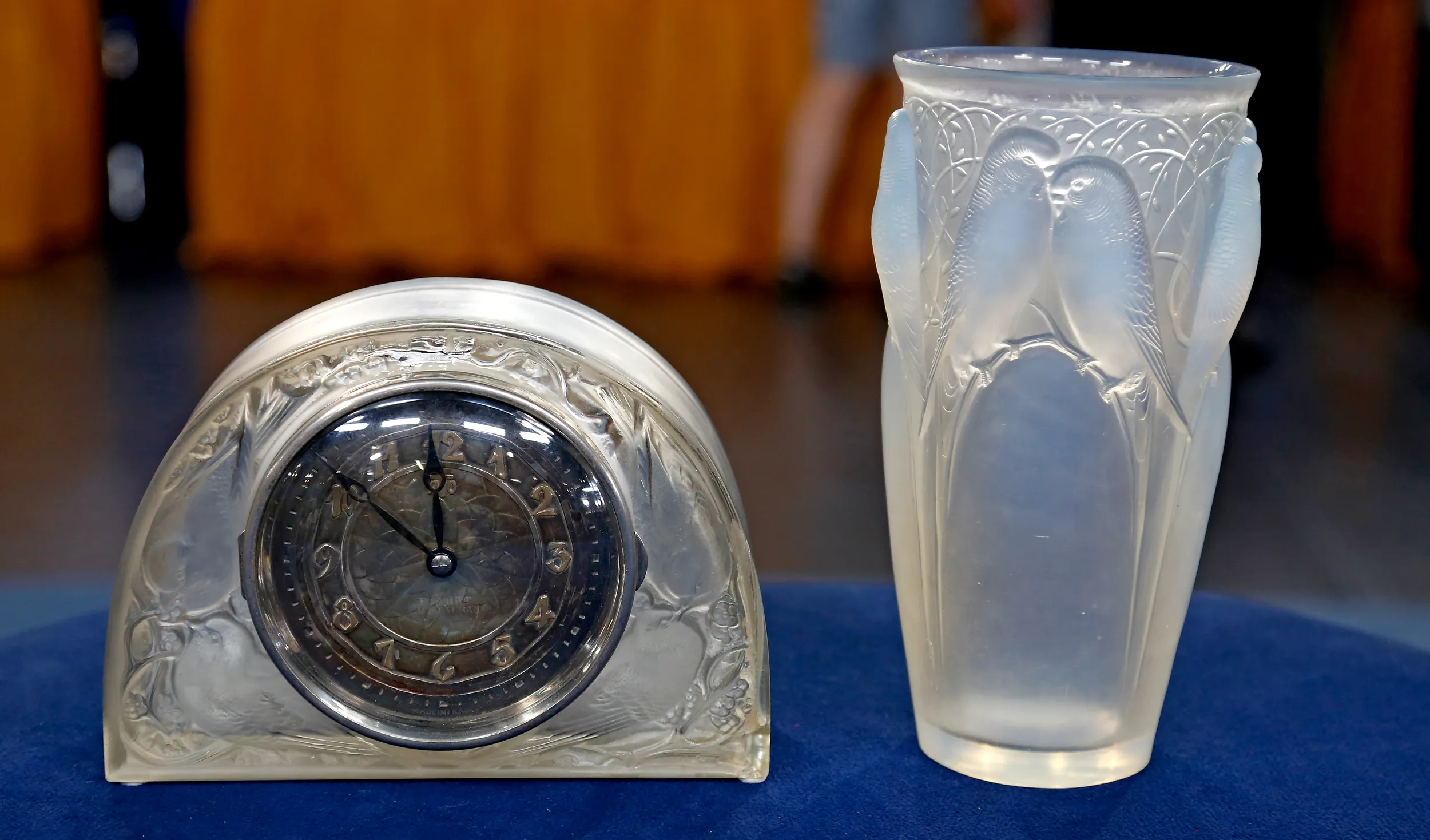GUEST: I know that they're two vintage pieces of Lalique. I know they're probably at least 60, 70 years old. Well, René Lalique was a great designer and jeweler, became a glass maker, and one of the greatest names in 20th century design. And these are, indeed, two authentic pieces of the work of René Lalique. They were both designed in 1924. That was pretty much the high point of René Lalique's glassmaking career, capped off the following year when he exhibited at the international exhibition in Paris. By the middle or the late '30s, things started winding down in terms of the Lalique factory. They were both made until the onset of World War II, or about 1939, but I suspect they made relatively few of either one after about 1935. Did you buy the clock here in the Anaheim area?
GUEST: This comes from a distance. I met a woman years ago. She had an old clock that her grandmother had given her at home in Australia, and she knew I collected clocks. So I purchased it from her, she sent it to me.
APPRAISER: The clock does come with different face versions. Most of them have these letters on front, "ATO." And ATO was the French company that made the clockworks. And they also sold the clocks. They had their own stores in Paris and beyond and they sold clocks that Lalique made with ATO movements. And occasionally, as in this one, you'll see the name of a specific retailer. And many of them, too, include "Made in France." Now, tell me about this one.
GUEST: This I got in a flea market. I noticed way in the background, there was a box and part of this was sticking out. And then when I looked at it, I saw René Lalique on the bottom.
APPRAISER: So how much did you pay for it?
GUEST: I paid a few hundred dollars for it.
APPRAISER: It's a well-known vase called Ceylon, which is the French word for the island of Sri Lanka. Just about all the work of René Lalique is signed at this period. It's what we call a wheel-cut signature, and you find that often on the heavier vases. That mark was stopped after René Lalique died in 1945. Have you ever looked it up and found a value for it?
GUEST: I've seen anywhere in a few thousand dollars and up. I've looked at this and it has very little damage, if any, to it.
APPRAISER: Well, the value of Lalique does depend a good deal on damage, and unfortunately, this one is not in very good condition.
GUEST: All right.
APPRAISER: You can look all over it and not find a single chip or a crack, so you would assume it's good. The Ceylon originally had a lip perhaps half an inch larger than this. That's been chipped at some point, I assume. I see. And a restorer has removed the entire lip. And he did a job which would fool many people if you look quickly to compare a Ceylon, but I'm afraid your Ceylon is not worth any more today than perhaps $500 at auction.
GUEST: Oh, really?
APPRAISER: Sorry to disappoint you.
GUEST: All right.
APPRAISER: Now, tell me about that clock. How much did you pay for that?
GUEST: $800.
APPRAISER: $800. There is a rather nice crack in the corner here, which is very often the way. They tend to be heavy, you put it down quickly. It's a beautiful clock called Moineau, or "Sparrows," one of Lalique's favorite design features. But with that crack, I think I would say that $800 is about a retail price. I would say today at auction, it would sell for perhaps as much as $500 to $700.
GUEST: That's all? Okay.
APPRAISER: If they were perfect, the clock would be at least $2,000 at auction and maybe $3,000. And the Ceylon perhaps between $7,000 and $9,000 if perfect.














